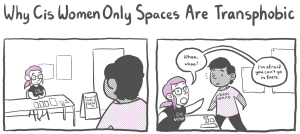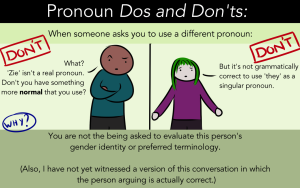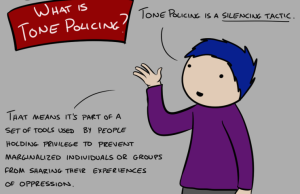What if I told you that it’s okay not to be okay?
You might accept that notion in theory, but when The Feels (as my daughters call it) occupy your mental space, leaving you with feelings of sadness, hurt, guilt, or just a general disconnect from any positive feelings about a thing, is your tendency to try to push through it, or to be with it?
There is this unspoken Church of Positivity dogma that pushes us toward constant optimism.
Think about how weird you’d come across to just about anyone if you said you didn’t feel good – and that you didn’t want to feel better. The agreed upon social sentiment is that as human beings, we should all be trying to experience positive thoughts and be optimistic about life.
We are expected to respond in the affirmative to the constant calls to action: show up and smile no matter what; think positive thoughts; kick fear to the curb; and be strong enough to push past our pain.
Seems legit, right?
As a matter of fact, the decision to choose positivity as our general life lens can be incredibly empowering when we’re in the mental space to receive it.
But when we are not – which is a very real part of most people’s experience – what do we do with our feelings?
When we feel shitty about a thing, afraid of an outcome, saddened (or devastated, even) by an experience, where do we go to lick our wounds?
Who is speaking about what to do when we’re not willing to hurry our feelings along, or to force-feed ourselves Iyanla Vanzant and Eckhart Tolle until we get to the better, easier feeling?
As the title of this piece implies, this is not a feel-good article.
Nothing in these lines is intended to help address negative thoughts in efforts to transform them into positive ones. Optimism has its place for sure, but there is no substitute for being present with our feelings.
It is in the spirit of authentic self-exploration and real self-expression that I offer you these three reasons to be okay with not being okay. But don’t worry – I’ve also included four options for accepting and expressing your real feelings, no matter what those feelings might be.
3 Radical Reasons to Be Okay with Not Being Okay
1. Sadness Is Not the Opposite of Self-Love
Sadness is a common emotion – and probably one of the most hurried-past experiences within the emotional spectrum.
Most of us view sadness as something that needs to be resolved or replaced with another (better) emotion. We are often asked whether we want to sit around and feel sad or brush it off and get on with our lives, as if those two things are opposing forces.
Sometimes we need to operate inside our emotions instead of trying to avoid them. In doing so, we avoid the toxicity of suppressed emotions and unmanaged hurt.
The old idiom is true: Hurt people hurt people – and so we can protect ourselves from becoming toxic, uncompassionate people when we start with ourselves and offer honest assessment of our own feelings.
Feeling sad or lonely can be tough to be with, but we are not weak or wrong or broken for having those feelings.
Trying to avoid these feelings can lead us to make decisions out of fear instead of honest consideration.
But allowing ourselves to feel those feelings makes us stronger and allows us to be honest about our environments. That honesty can lead to sound decision-making, rooted in a love and appreciation for our own wellbeing.
2. Naming Our Emotions Can Offer Access to Personal Power
Personal power, through my lens, is about a commitment to actively embracing who we are and setting our own goals based on whatever we need to feel well.
I use the term actively embracing as a means of placing emphasis on the “action” aspect of personal power. If we wait to react to society’s prompts from the Church of Positivity – or any of the other well meaning, but often harmful messages about emotional wellness – we surrender ourselves to the whims of media and loudmouths, and we risk losing our own power.
Personal power is not always about overcoming something or being the picture of strength and resilience.
It can also be about the stillness of being right where we are emotionally, and allowing that space to clue us in to whatever is happening in our world and whatever we need to feel in that moment.
As one of our editors, Melissa A. Fabello, noted in her helpful piece about communicating our feelings, broadening our emotional vocabulary can be an effective approach to authentically managing our feelings. The word bad, for example, is grossly misused in our emotional vocabulary.
Melissa’s article offers a great way to address the misuse of words that can potentially stifle our emotional process, and you might find it useful in your life:
When you’re feeling positively, try to avoid using the word ‘good’ to describe it. Are you feeling content? joyful? satisfied? loved? appreciative? Likewise, when you’re feeling negatively, try to use a more descriptive word than ‘bad.’ Is it afraid? incompetent? confused? inadequate?”
This is not an exercise in semantics; the words matter.
For example, if I were feeling sad about something that I thought I should have been over already, I’d probably experience some shame around still feeling sad. I would have then compounded my bad feelings just because I attached an expectation to my own emotional process.
That can be the catalyst for a harmful cycle of self-deprecation and rushing past pain in order to stop experiencing shame.
Name your emotions – because oftentimes, we carry even more guilt and shame around feeling our feelings than we do the actual feeling.
Making space to acknowledge your feelings is a great start to making peace with it..
3. Sometimes Encouragement Is More About (Their) Discomfort Than (Your) Healing
Frequently, the people closest to us encourage us to feel better as soon as we can, often doing so from a place of love.
They love us – and so they find it hard to see us feeling anything but good, which prompts them to go into fix-a-feeling mode. It’s because they care, and it’s because it’s a human tendency to avoid pain and to seek pleasure.
When we recognize that tendency, we can let our loved ones off the hook for being positivity pushers by using compassion and understanding for their perspectives without compromising our own needs.
We can do that by letting them know that we’re not ready for a different feeling (because that’s all it is, a different feeling – not necessarily a better one or a more helpful one).
We can also offer that same compassion to ourselves by recognizing our human tendency to want to pull away from discomfort and go towards feelings that are may feel easier to manage or that make people comfortable around us.
But that’s not our job.
We are not required to manage other people’s feelings along with our own. We are not charged with spreading cheer and love across the world.
We are here to be ourselves, to feel through our feelings, to get comfortable in our own skin, and to be honest with ourselves as consistently.
Of course, that can be easier said than done, so here are a few examples of ways to accept and express our real feelings.
4 Ways to Manage the Feelings
1. Use the Word Processing
It’s a total Easy Button move, and it’s often the honest truth.
When you get the inevitable “Are you okay?” or “How are you feeling?” you can simply say, “I’m processing. Thanks for asking.”
That way, you’re not offering up your exact feelings for discussion, nor are you saying something opposite of your current truth just to make things easier for you or them.
2. Make Space for Shared Discomfort
If you’re willing to verbalize your right to feel your feelings, that choice often brings about a discomfort.
Most people aren’t comfortable with a perceived problem (your feelings) until they feel like it’s close to being solved.
If your relationship with the person can sustain honest conversation, let them know that you’re not okay – and that you don’t hold them accountable for changing that feeling.
Express it to them, so that they can witness you stand up for yourself in that way.
3. Have a ‘Sucky Feelings’ Ritual
All our feelings deserve our attention, but not all of them should be part of our focus.
If you want to explore the potential aha moments around your seemingly sucky feelings, make space with words and images that honor those feelings. Image-rich social sites like Tumblr and Instagram can be hella cathartic for feeling our way through our emotions.
I like combing through playlists on Soundcloud when I’m mining my sadness. I also make up my own rituals so that I remember to be present with my own feelings.
For example, I have this ritual I do with my phone to watch and listen to myself as I make peace with whatever I’m feeling in that moment. It’s one of the ways I show up for myself without feeling any pressure to adjust my feelings in any way.
Try it out – or intuit your own ritual and see how you can be there for yourself more often.
4. Recognize a Tendency for Toxic Self-Talk
Everyday Feminism’s founder, Sandra Kim, does a lot of work around healing and personal transformation.
She recommends a simple self-inquiry sentence as a means of getting present and being okay with our feelings.
Say or write the following sentence, filling in the blank with the most honest statement you can say about whatever emotions you are feeling: “I feel _____, and that’s okay.”
Standing in that assertion is a powerful way to bring yourself back to your right to feel – and to help you surrender to the pressure to rush yourself to a shallow healing.
The last two words in that sentence (that’s okay) offer a way to acknowledge that we’re not doing something wrong or bad by feeling how we feel.
Sandra often uses the example of feeling cold to illustrate the option to leave our feelings label-free. When we feel cold, that feeling is not bad or wrong (or good or right); it just is – and we can’t always change it right in that moment.
But as mindful beings with a full spectrum of emotions, we can acknowledge that while it may not feel great, it exists – and we are not broken because we feel the existence of the thing.
On Being in Favor of The Feels
For many of us, the tendency is to try to power up and push through any feelings we deem undesirable. It may even seem like an act of self-preservation to purposely stave off The Feels and opt instead for our daily dose of feel good now.
But is there a cost to this focus on positivity? Can we truly heal from hurt and pain if we are being pushed past our pain? Moreover, is the avoidance of tough emotions – such as hurt or pain – rooted in false notions of acceptable and “best to avoid” emotional self-expression?
Essentially, this is about being comfortable in our own skin and trusting ourselves to be present and resourceful enough to be honest with our feelings without drowning in them.
And even if we surrender to allowing perceived bad feelings to wash over us, we can trust ourselves enough to be right where we are, to feel how we feel, and to define healing on our own terms.
[do_widget id=”text-101″]
Akilah S. Richards is a Contributing Writer for Everyday Feminism. She is a six-time author, digital content writer, and lifestyle coach who writes passionately about self-expression, womanhood, modern feminism, location independence and the unschooling lifestyle. Connect with Akilah on Instagram, Tumblr, or her #radicalselfie e-home, radicalselfie.com. Read her articles.
Search our 3000+ articles!
Read our articles about:
Our online racial justice training
Used by hundreds of universities, non-profits, and businesses.
Click to learn more





















